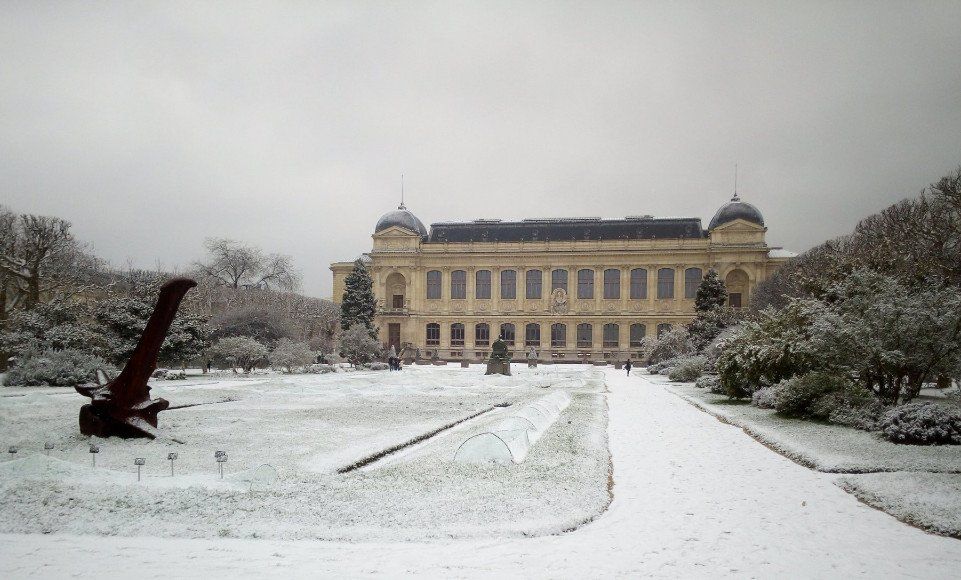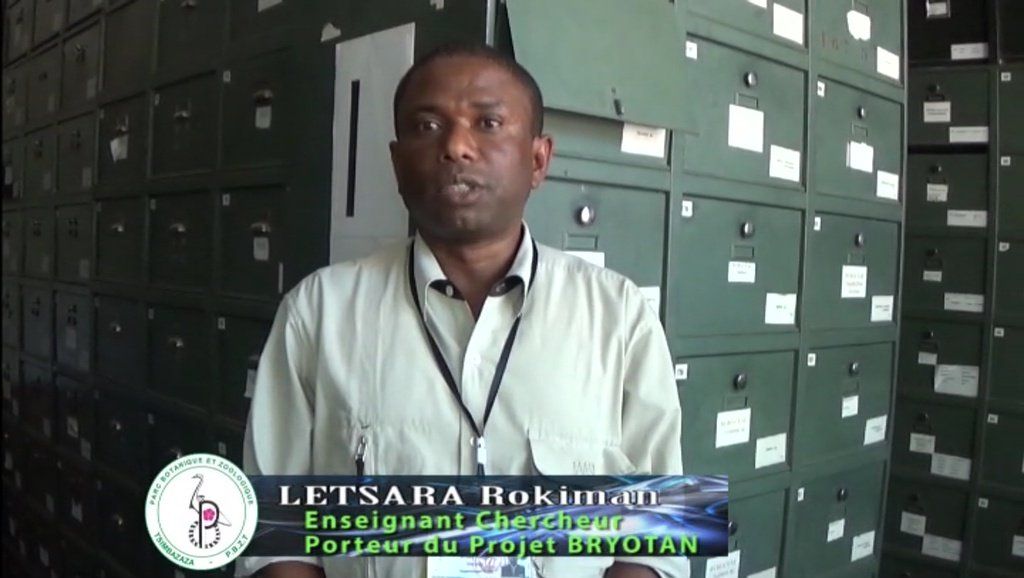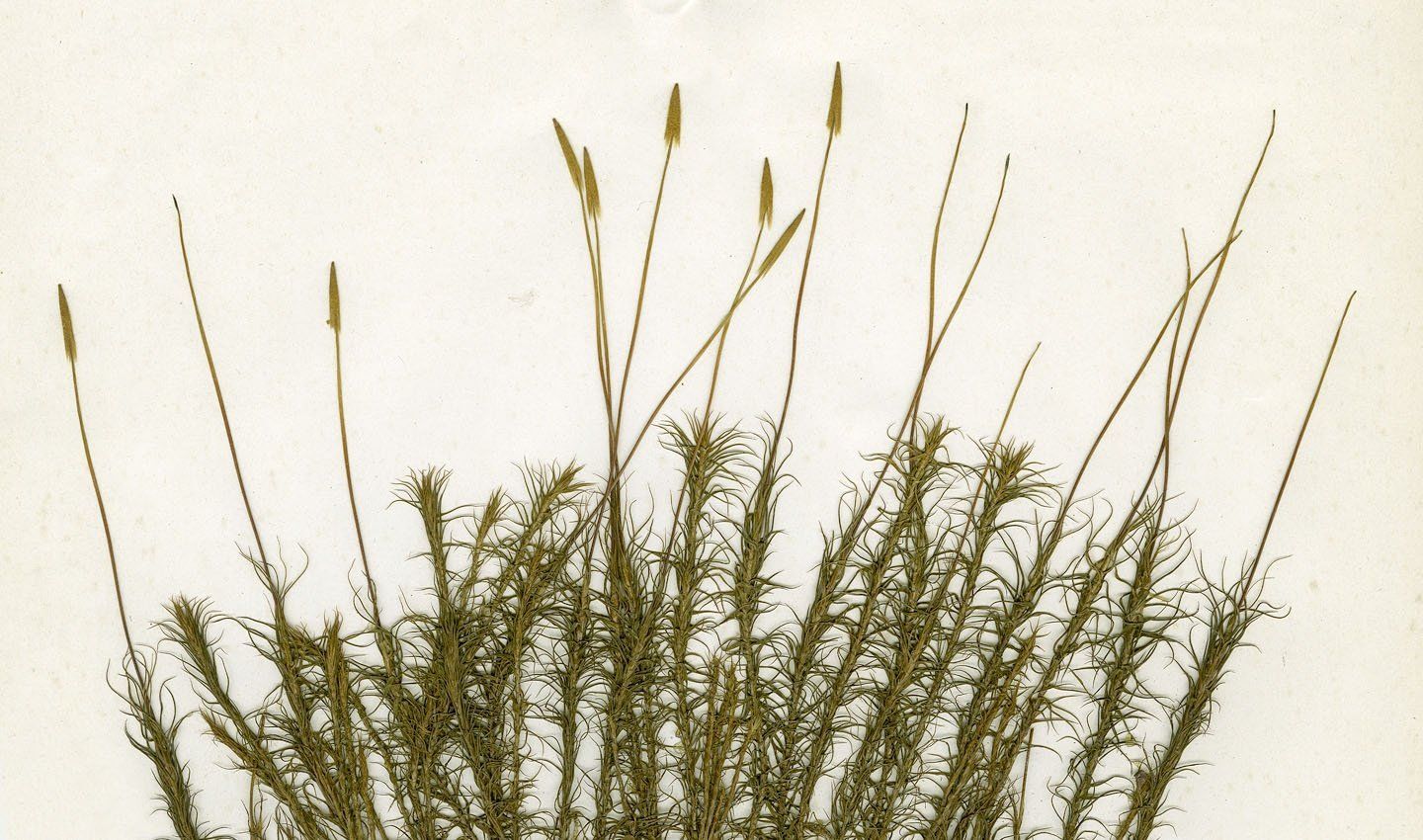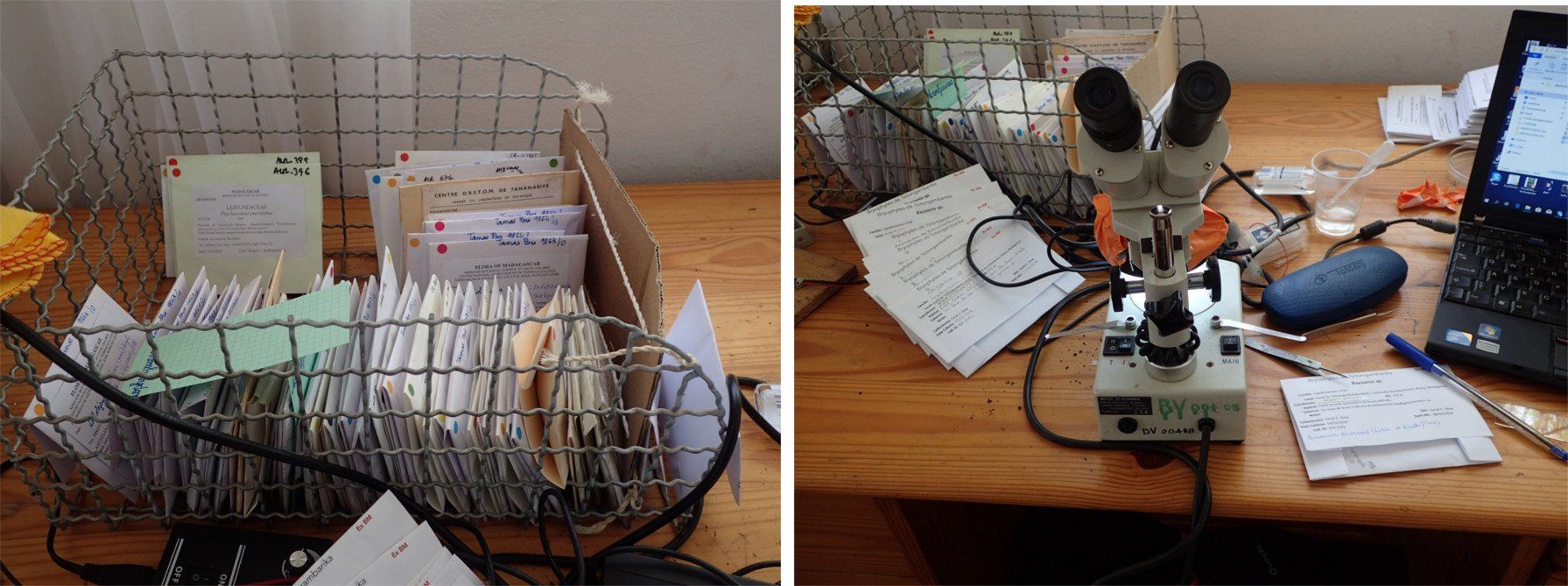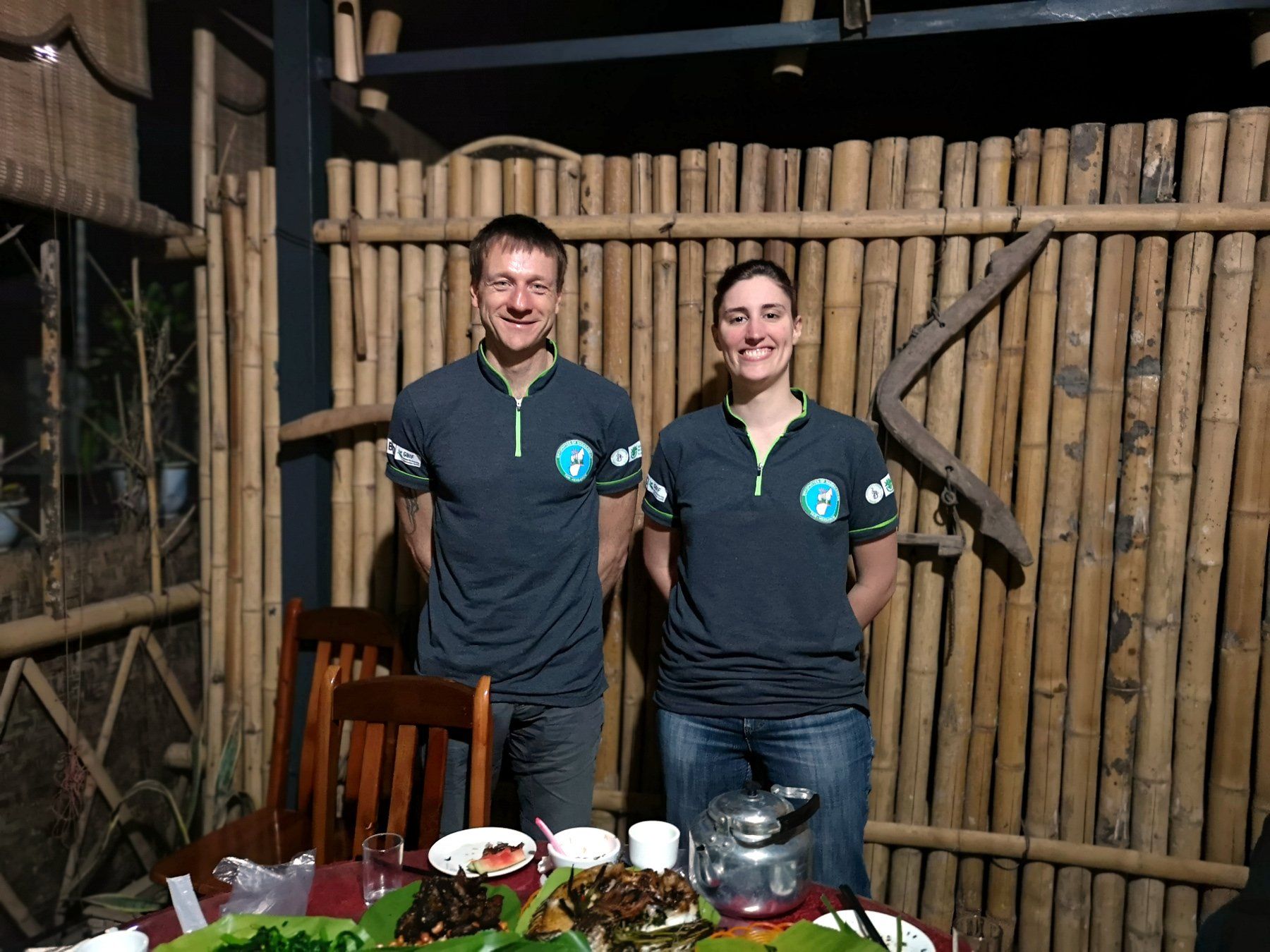
Alain Vanderpoorten who participates to the BryoTan workshop, Sept. 2018 in Antananarivo and Lucie Bauret, (postdoc at
Xishuangbanna Tropical Botanical Garden
Mengla, Yunnan, China) wear with pride the BryoTan colors in China.

At the date of February 2nd, 2019, 2427 occurences were digitalized by Fara (here at her desk), but also by Eliane and by Miarisoa
, helped by ELlysée and Rita during the workshop. We hope to reach more than 3000 occurences at the ned of Februrary 2019.
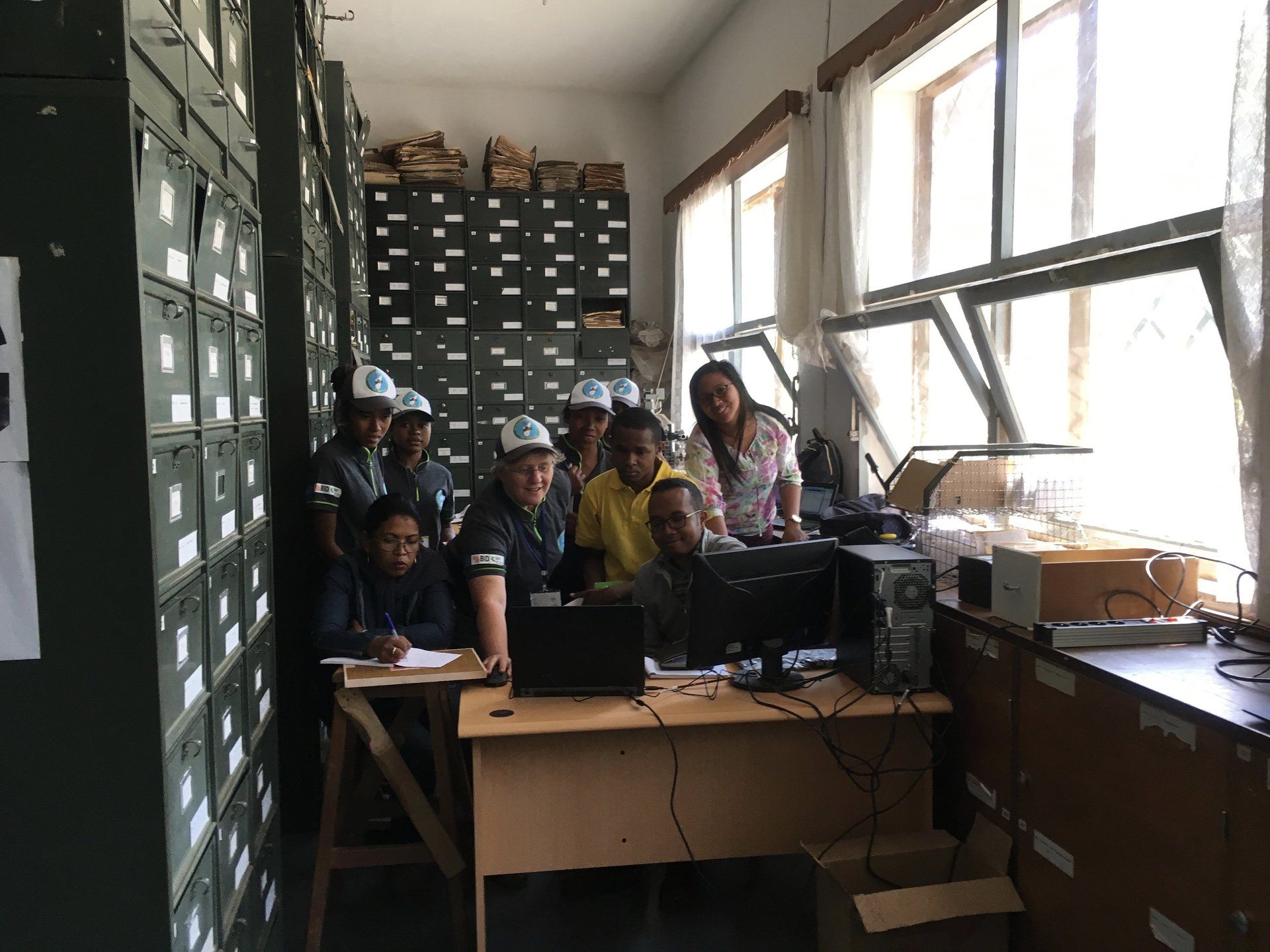
Xper2
is a knowledge data bases system. Xper2 and its associated tools is a plate-form dedicated to taxonomic descriptions and computer-aided-identification. It requires no special computer skills. It is very easy to use for the
amateur naturalist that wants to identify a specimen with an already
made application, as well as for the professional taxonomist that
creates new applications. It is developped by the lab LIS
, a bioinformatic component of the Institut de Systématique Evolution Biodiversité
at the MNHN.
Xper2
is the local version, on your computer.
Xper3
is the online version.

During the workshop, students are trained to bryophytes diversity: the different groups of bryophytes, how to recognized them, how to manage bryophyte collection etc. Each researcher participates to the training, depending of their own observations, and on the students questions.
Here, Roger Lala Andriamiarisoa (standing at the door) and Catherine Reeb on his right are showing how to use an identification key to identify mosses.
On the image at the top, sitting at the table, from left to right : Miarisoa (Antananarivo), Roita (Mahajanga), ElLiane (Antananarivo) and Elysée (Mahajanga).
A part of our team, from left to right, Eberhard Fischer (Germany), Nick Hodgets (UK), Anrea Sass (Hungaria) inaugurate our working room. A part of microscopes and lens were borrowed from Tana University, thanks to the department of Biologie Végétale.
During this firts day, we just finished to install the room, we tested the organisation and began our first observation.


